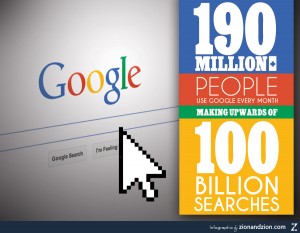
Every day, over 1 billion searches are done on Google. In North America, the Google network reaches over 84% of internet users. Integrated within the results for most of those searches are pay-per-click advertisements. Imagine as a business, having the opportunity to reach that many people with advertisements. For any business wanting to increase their sales, awareness, business and number of returning customers, PPC is necessary. With PPC, an advertising campaign can be controlled, measured and tested all within a single service like /Google AdWords or /Bing Ads (formerly AdCenter). Both services allow for region targeting, positive and negative keywords, daily traffic measuring, and recommendations for better performance.
Region Targeting
When a local business only wants their ads to be seen by people in their area, they can select specific zip codes and cities so only when searchers in those areas that use specific keywords will see the ads. This saves the business money so they aren’t paying to show ads to consumers in other areas.
Keywords
Keywords are terms an advertiser can choose that will trigger their ad. An example for a Phoenix plumbing company would be “plumber in phoenix” so whenever this phrase is searched for, one of the company’s ads will appear in the search results. Businesses will have thousands, even hundreds of thousands of keywords to make sure they are taking advantage of all possible searches that could be done. Keywords that an advertiser wants to use to trigger an ad are called Positive Keywords. Negative Keywords are terms an advertiser lists to block an ad from appearing when searched. Going back to the Phoenix plumbing company example, a negative keyword they may have is “Joe the Plumber” so their ads won’t show up when someone is looking up activist Joe the Plumber.
Measuring and Testing
With PPC, a business or agency can easily keep track of daily traffic for ads and linked websites through both AdWords and Bing Ads. How many impressions and clicks an ad gets are measured, along with how much the click costs. Conversions can also be measured, which are the leads a business gets from their ads. This could be emails, website clicks, calls or sales. In both the Google and Bing software, conversions can be tracked which allows an advertiser to track the analytics of the campaign depending on what their conversion goals are. With this, advertisers can make adjustments to their campaign to better achieve their goals. With daily tracking for each specific ad, ad testing can be done to know what people are more likely to click on. Ad testing can help an advertiser decide on simple things like using a period or an exclamation mark, and even on more complex things, like what kind of deal to advertise or what phrase to use. Ad testing can also help a business test brand messaging. National businesses can test their slogan or message for a few weeks on a small PPC campaign and decide if they would like to use it in a nationwide campaign. Having the ability to measure exact traffic for ads is something that PPC offers that other advertising outlets may not.
Cost Effective
When managed correctly, PPC can help a business save money. If an ad is seen but never clicked on, it won’t cost the advertiser anything. Once the ad gets clicked on, a cost is calculated according to the campaign budget and price of the keyword.
A business wants their name recognized by consumers. They want to increase their sales and business. They want to increase their return on investment. Using Pay-Per-Click advertising is a great way for a business to do all of this. PPC has come a long way since Google AdWords was first introduced in 2000 and is continuously updating and getting better. If you are still questioning whether PPC is right for your business, check out this article on /Word Stream from Larry Kim, along with a great infographic to go with it.
